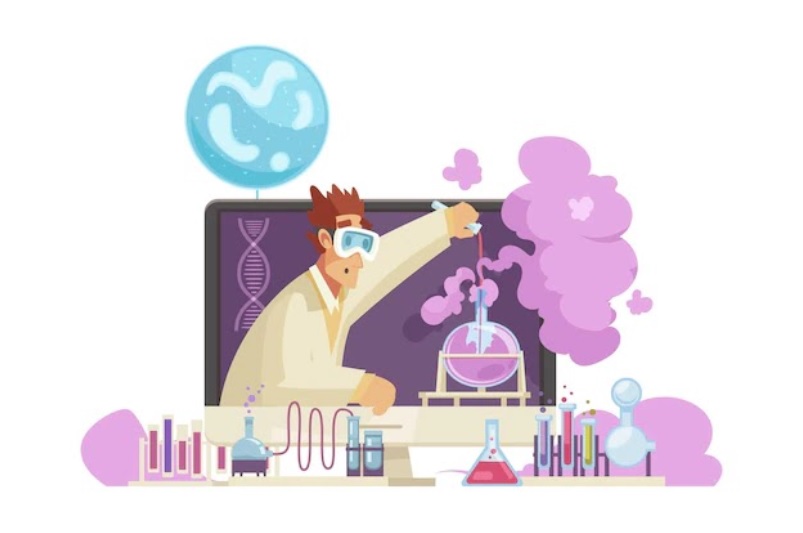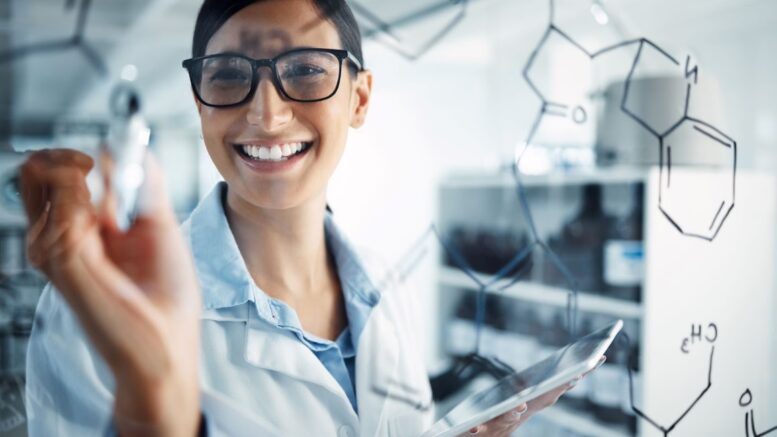Imagine a special tool that can link specific puzzle pieces without affecting the rest. In medical research, experts must deal with a similar problem: study and change molecules without affecting other essential parts. This is where bioorthogonal chemistry comes in.
You might be wondering why knowing about bioorthogonal chemistry is crucial. The answer lies in its remarkable ability to provide a ‘click-and-go’ approach to chemical reactions. With click chemistry products, experts can work accurately without causing disruptions.
Bioorthogonal chemistry provides a collection of reactions that experts can execute selectively without causing any interference. With the help of click chemistry products, scientists can attach special ‘tags’ to drug molecules or imaging probes. These tags act like customized GPS, enabling experts to visualize diseases without disturbing healthy tissues.
In the pharmaceutical industry, bioorthogonal chemistry plays a pivotal role in drug development. Scientists can attach tags to drug molecules, enhancing their properties and ensuring targeted delivery. In diagnostics, experts can attach click chemistry products as imaging probes to specific biomolecules, helping doctors identify abnormalities.
Beyond drug development and diagnostics, bioorthogonal chemistry has a wide range of industrial applications. For example, experts can use custom PEG services to ensure the drug’s stability and efficacy. This method allows scientists and industries to create remarkable products and solutions, improving healthcare.
Bioorthogonal chemistry empowers experts to work with molecules with exceptional precision. It offers a selective approach to chemical reactions, opening doors to new possibilities.
Purpose Of Bioorthogonal Chemistry
The word ‘bioorthogonal’ means that these reactions are not part of living things’ complex and interconnected biochemical pathways. Because of this one-of-a-kind quality, bioorthogonal chemistry is helpful in many fields, from biological research to biomedical applications.
The main goal of bioorthogonal chemistry is to give experts a way to add and change chemical functions in biological systems in a controlled way. They can’t always use traditional methods because enzymes and reactive functional groups can interfere with the desired reaction.
Bioorthogonal reactions get around these problems because they’re selective. Hence, experts can put non-natural chemicals into biological environments without harming or disturbing cells too much. Also, they use bioorthogonal chemistry to solve significant problems in chemical biology and drug development. Here are some of them:
Modifying Biomolecules
Using the specificity of bioorthogonal reactions can help experts change biomolecules. It lets them modify proteins and nucleic acids in specific places without changing the structure or function of the rest of the molecule.
Understanding how biological processes work and making new bioactive entities requires a clear understanding of how biomolecules change.
Imaging And Diagnostic Applications
Imaging and diagnostic methods have evolved significantly because of bioorthogonal chemistry. Adding bioorthogonal chemical tags aids researchers in monitoring biomolecules and their behavior. This approach gives them valuable information about how disease happens and how cells work.
For instance, experts used bioorthogonal chemistry to label glycans on the surface of cells, helping doctors diagnose and keep an eye on cancer.

Creating Synthetic Biological Systems
Bioorthogonal chemistry has made it easier to create synthetic biological systems by combining biological and synthetic parts to work together. The convergence of biology and chemistry has led to the creation of new biosensors. These materials are safe for living organisms and can enhance their capabilities beyond their previous limits.
Applications Of Bioorthogonal Chemistry
One of the most common uses of bioorthogonal chemistry is to label biomolecules like proteins, nucleic acids, and lipids in a specific way. Experts can put bioorthogonal chemical tags on these biomolecules and examine reactions. This method makes it possible to see and follow specific biomolecules in living cells and tissues.
For instance, some experts have used bioorthogonal click reactions to mark proteins with fluorophores for super-resolution microscopy. This technology enables them to study cell structures in an unprecedented manner.
Here are a few applications of bioorthogonal chemistry:
Drug Delivery And Targeting
Bioorthogonal chemistry is crucial in determining the location and target when administering drugs. Experts can put bioorthogonal handles on drug molecules, helping them get to the correct place in the body.
Once at the target site, bioorthogonal reactions will release the active drug. This approach reduces side effects and improves the effectiveness of the therapy. One example is when experts used bioorthogonal reactions to make ‘smart’ nanoparticles that release anticancer drugs only in tumor tissues.
Bioconjugation And Click Chemistry
The field of bioconjugation has undergone significant changes due to the emergence of bioorthogonal reactions, particularly those rooted in click chemistry. They make it possible for biomolecules to stick together efficiently and specifically. As a result, experts can make new biologically active entities, like protein-protein conjugates or nanoparticles.
For example, antibody-drug conjugates (ADCs) have been synthesized using click chemistry. In ADCs, a cytotoxic drug is attached to an antibody that selectively targets cancer cells. ADCs are a highly targeted approach to cancer treatment.
Examining Biological Processes
Bioorthogonal chemistry is a valuable tool for experts to understand complex biological processes. It helps them when introducing novel chemical groups to biomolecules, facilitating the study of their functions and interactions.
For example, adding non-natural amino acids to proteins helps researchers study their structure and function in ways that would be otherwise unattainable using only natural amino acids.
Conclusion
Bioorthogonal chemistry is a powerful and flexible tool used in many areas of science. Experts can use it to label biomolecules and deliver drugs or make synthetic biological systems. Its ability to do selective chemical reactions inside living systems without interfering benefited science significantly.
As the field of bioorthogonal chemistry keeps improving, its applications will continue to grow, leading to breakthroughs in biomedical research and therapy.
